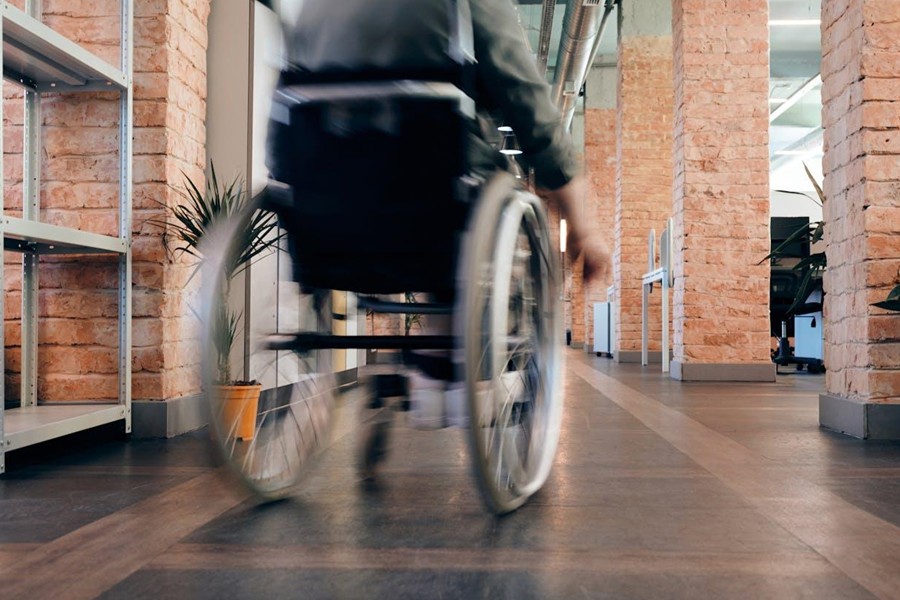 Millions of Americans who applied for Unemployment Insurance (UI) and the Supplemental Nutrition Assistance Program (SNAP), formerly known as the Food Stamp Program, during the pandemic have faced time-consuming application processes.
Millions of Americans who applied for Unemployment Insurance (UI) and the Supplemental Nutrition Assistance Program (SNAP), formerly known as the Food Stamp Program, during the pandemic have faced time-consuming application processes.
Thye have also faced trouble reaching government offices, and delays in receiving benefits, according to new research by the nonprofit organization, Hunger Free America. This data comes to light during the greatest hunger crisis in the United States in modern times with one in three children facing food insecurity and the highest unemployment rate in modern American history.
…a survey of 1,638 individuals living in the United States who were questioned about their SNAP and UI applications in addition to research conducted by a team of Hunger Free America associates who studied the user experience of applying for such benefits in all 50 states and the District of Columbia.
Hunger Free America’s new report, “Access Denied: Unemployment and SNAP Benefits Application Barriers During the Pandemic,” includes the results of a survey of 1,638 individuals living in the United States who were questioned about their SNAP and UI applications in addition to research conducted by a team of Hunger Free America associates who studied the user experience of applying for such benefits in all 50 states and the District of Columbia.
Hunger Free America’s research associates found that in every state, eligible people must navigate between several different websites and systems to apply for UI and SNAP, even though the information and documentation (e.g. income, employment status) they need to provide for the programs are very similar. Since the pandemic began, these flawed systems resulted in millions of eligible Americans being unable to access the financial and nutritional support they needed on a timely basis, thereby unnecessarily making it more difficult for families to afford to pay for basic expenses such as housing and food.
Joel Berg, CEO of Hunger Free America, said, “While it’s true that government safety-net programs help tens of millions of Americans avoid starvation, homelessness, and other outcomes even more dreadful than everyday poverty, it is also true that, even in ‘normal times,’ government aid for non-wealthy people is generally a major hassle to obtain and to keep. Application systems are outdated by decades. Government must transition to modern technologies to make it easier and quicker for struggling Americans to get life-saving aid.”
Forty-two percent of survey respondents said it was “time-consuming and/or difficult to apply” for UI, and nearly one-fourth of respondents had the same response for the SNAP application process. Additionally, 33 percent of respondents said it took more than 3 hours to submit the full SNAP application, while nearly one-fifth of respondents said it look more than a day. Almost half of survey respondents said it took more than 3 hours to apply for UI, and 21 percent said it took more than a day.
Forty-two percent of survey respondents said it was “time-consuming and/or difficult to apply” for UI, and nearly one-fourth of respondents had the same response for the SNAP application process. Additionally, 33 percent of respondents said it took more than 3 hours to submit the full SNAP application, while nearly one-fifth of respondents said it look more than a day. Almost half of survey respondents said it took more than 3 hours to apply for UI, and 21 percent said it took more than a day.
The survey also questioned respondents on the ease with which they were able to receive support while applying, and 40 percent of respondents said they had problems reaching government offices while applying for SNAP, with 36 percent stating that they never received a call back after leaving a message. More than half of applicants reported having difficulty reaching government offices by phone when applying for UI, and 40 percent said they never received a callback.
The survey also questioned respondents on the ease with which they were able to receive support while applying, and 40 percent of respondents said they had problems reaching government offices while applying for SNAP, with 36 percent stating that they never received a call back after leaving a message. More than half of applicants reported having difficulty reaching government offices by phone when applying for UI, and 40 percent said they never received a callback.
To begin fixing these problems, Hunger-Free America strongly supports passage of the federal Health, Opportunity, and Personal Empowerment (HOPE) Act (H.R. 6217/S. 3484), sponsored by U.S. Representative Joe Morelle of New York, U.S. Representative Jim McGovern of Massachusetts, and U.S. Senator Kirsten Gillibrand of New York. The bill would authorize and fund state and local pilot projects to make it easier for struggling Americans to use modern technologies to submit applications for multiple benefits programs more easily and quickly.
Gillibrand and Morelle previously called on their colleagues to include the legislation in the next Covid-19 relief package in order to decrease the stress placed on low-income Americans throughout this process as well as to relieve the massive administrative burdens now placed on state, county, city, and tribal government agencies that run these programs.
“I would like to thank Hunger Free America for conducting this study that shines a light on the many barriers Americans face when applying for federal assistance”, said Senator Gillibrand. “The coronavirus pandemic has shown federal programs such as SNAP and unemployment benefits are critical to ensuring that Americans are able to stay on their feet in times of need. It is long past due for us to update the application process for federal aid to make these procedures more efficient and effective. I’m proud to have introduced the HOPE Act in the Senate, and I will continue to fight for its passage.”
Congressman Morelle said, “The Covid-19 public health crisis has shined a stark light on the inefficiencies of government services and exacerbated the already significant barriers struggling families face. Too often, this prevents those in need from accessing the benefits they deserve. We must take action to uplift the most vulnerable among us and empower families with the tools they need to succeed, and that’s why I’m so proud to have introduced the HOPE Act.”
Said Congressman McGovern, “Thanks to Joel and his team at Hunger Free America, we have even more detailed information about the duplicative, outdated, and unnecessarily burdensome requirements of applying for unemployment and food assistance in America. These roadblocks to assistance are not only terrible for families in crisis – they also end up costing our government more in the long run.
It’s for exactly these reasons that I’m proud to co-sponsor Congressman Morelle’s HOPE Act so we can start updating these systems to make it faster and easier for struggling Americans to get the help they need and deserve.”
One-third of survey respondents who applied for benefits applied for both SNAP and UI, navigating two application systems to receive both benefits. The survey also showed that 72 percent of Americans support the advances included in the HOPE Act.
“We know that access to benefits is crucial for low-income New Yorkers to make ends meet, especially under our current circumstances. This report shows exactly why the HOPE Act is a necessary path forward to ensure people are aware of the benefits they are eligible for and make it easier for them to apply. This is about equitable access to supports that make a difference for people in our communities.”
Sheena Wright, President and CEO of United Way of New York City, said, “We know that access to benefits is crucial for low-income New Yorkers to make ends meet, especially under our current circumstances. This report shows exactly why the HOPE Act is a necessary path forward to ensure people are aware of the benefits they are eligible for and make it easier for them to apply. This is about equitable access to supports that make a difference for people in our communities.”
Berg added, “Put yourself in the places of aid applicants for a moment. You will need to go to one government office or web portal to apply for SNAP, a different government office to apply for housing assistance or UI, a separate WIC clinic to obtain WIC benefits, and a variety of other government offices to apply for other types of help—sometimes traveling long distances by public transportation or on foot to get there—and then once you’ve walked through the door, you are often forced to wait for hours at each office to be served. These administrative burdens fall the greatest on the least wealthy Americans.”
The survey results were collected on behalf of Hunger Free America, through a survey 1,638 individuals living in the United States conducted by Kupersmit Research, a Colorado-based strategic research firm. Detailed survey results as well as the full report can be found here on Hunger Free America’s website.
Become a Harlem Insider!
By submitting this form, you are consenting to receive marketing emails from: Harlem World Magazine, 2521 1/2 west 42nd street, Los Angeles, CA, 90008, https://www.harlemworldmagazine.com. You can revoke your consent to receive emails at any time by using the SafeUnsubscribe® link, found at the bottom of every email. Emails are serviced by Constant Contact








